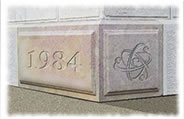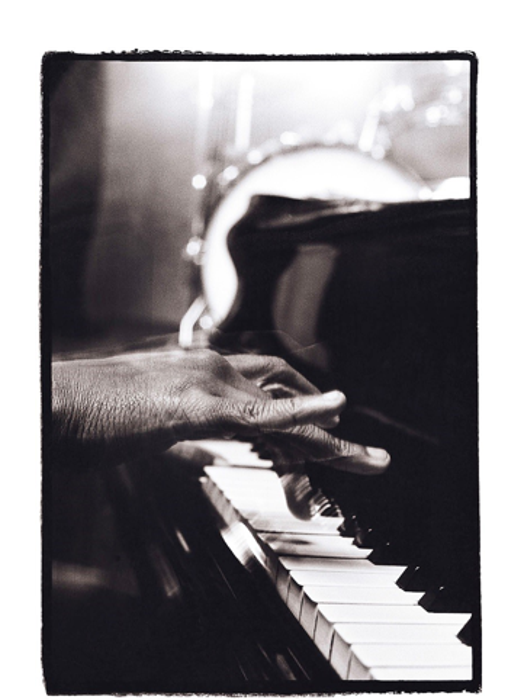The Blues, Pattern Recognition and Fusion’s “Ready, Set, Go!®”
“You can get anything you want, at Alice’s Restaurant.
You can get anything you want, at Alice’s Restaurant.
Walk right in, it’s around the back.
Just a half mile from the railroad tracks.
You can get anything you want, at Alice’s Restaurant.”
– Arlo Guthrie
American Songwriter and Singer
(1947 – )
The market digs the Blues!
The “Blues” as a “musical idiom” or format (C chord/4 bars. G chord/4 bars. D chord/4 bars. Repeat.) is the most popular song structure on the planet. Muddy Waters, the Beatles and the Stones. Robert Johnson, Eric Clapton, Tracy Chapman, Billy Joel and of course, Arlo are all playing the Blues. (As a college guitarist, I took to it because one could begin performing immediately after acquiring the minimum of three chords…) One guitar + three chords = Musician! Hey! Simplicity Rocks!
We think there may be more to it. The chord structure is simple. The verse-chorus-verse structure is simple. The poetry/rhyme structure is simple as well. Three chords, three verses and a chorus combine to create a musical playground for creativity. All in intertwined, repeating patterns of threes and fours… Complexity founded on simplicity! Wow!
Pattern Recognition
Part of the beauty of the blues is that you don’t have to know anything about music to recognize the underlying patterns inherent in the style. You get the pattern because it’s simple circular/triangular symmetry is embedded in the culture. (“Is that a blues motif I’m hearing? No man, that’s the Stones!”) Listening to music unconsciously in the car, you don’t have to be a sophisticate to feel the circle of completion as the 3rd verse concludes and the final chorus “comes around on the guitar” one last time before the closing riff.
Fusion’s “Ready, Set, Go!®”
As audience members, we are sophisticates — educated for years by television, music and the greater media. We know you’re going to be either a talker or a communicator — we can recognize your patterns before we discern the content. If you simply get into it, we know you’re a talker. Whereas, if you open with a quote, and then reveal your thinking in a subject statement, we know you’re a communicator — we recognize the pattern. Next you’ll lay out an agenda… Because that’s the pattern sophisticated speakers use. It puts our minds at rest. We know where you’re taking us. The material is new, but the path is familiar — and we’re happy to go there with you. If a presentation doesn’t follow a familiar and accepted pattern, the listeners have a somewhat more tense time — either staying on edge as they listen — attempting to discern the talker’s obscure intentions as he goes along — or disconnecting in favor of the smartphone. Pattern recognition is the subconscious intelligence embedded in our culture that helps us decide where and how long to focus. Familiar patterns make focusing easier.
Fusion’s “Ready, Set, Go!®” is simple, but not simplistic.
The approach began with Aristotle. A Beginning, a Middle, and an End. Today, each of those three seniors has three juniors of its own. The Introduction has an Opening, a Subject and an Agenda. The Body has three Topics, each with three junior sections. The Conclusion has a Summary, a Main Idea and a Next Step.
With multiple layers of simplicity, it’s a sophisticated tool which capitalizes on the pattern-based intelligence already resident in our culture. It makes listeners both comfortable with the speaker and confident in the process. It sets the audience up to be there at the conclusion with you, having absorbed the reasoning that got you there. If they can recall — even repeat — the argument; the conclusion has a better chance of acceptance on its merits.
The best speakers (and the best musicians…) are not great because they ignore the pattern of their styles, but because they observe them — then bend them a little in unique and special ways. (What we call a “Blue Note” in music.) Greatness is embodied in working the structure, but making it work for you. (Is that a Fusion “Ready, Set, Go!” Presentation I’m listening to? No man, that’s Bill Clinton!)
Applications
1. As an Individual
Recognize that “nailing the structure” is where presentation greatness begins. Not where it ends! A good guitar, a mastery of structure, a great lyric and ten thousand hours of practice is what comprises a solid musician. (In speaking, the same formula applies.)
2. At Home
On hobbies, writing, painting, yard work, mechanics… recognize that you’ve got to get it right before you make it great. When the basics are done, there’s room for the personal touch.
3. At Work
Don’t strive for uniqueness. Strive instead for mastering the content and the structure. Leave extra time after the hard preparation for the “blue notes” to appear as you improvise, smile and interact. The basics require all your energy. The unique touches appear unbidden – as if by magic – once the basics are in hand.
Structure, the basics, practice… You’ve heard it all before.
Hey, you can’t always get (anything) you want, but if you try sometimes…
Subscribe to our Newsletter


